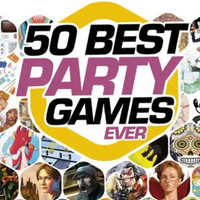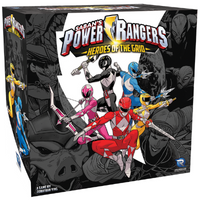08 May 2022
|
We build this city on dice and board
Becoming an architect is a long and arduous journey. There are years of study: learning of regulations, standards, best practices and even law. Tabannusi: Builders of Ur, where players are architects building the Great City of ancient Mesopotamia, unintentionally (we assume) recaptures that ponderous process in its initial introduction to the players. It is an intimidating game to face – the board is littered with iconology and every item you add to it during set up, whether a tile or a card, seems to add even more signs to decipher. It is also not uncommon to get an action that is resolved in a six or seven stage ‘procedure’. Add to that all the rules for a randomized set-up together with a mountain of components and you might as well give up on this city-building affair
and go into interior design instead (equal design satisfaction but more lucrative potential).
The game realizes that it can, at times, be too much. For example, the whole back of the rulebook is dedicated to explaining every single tile, card, ability or icon, which players can refer to when in doubt. Sure, seven steps might sound like a lot, but it just makes a rule very clear and logical. Even without these little details, Tabannusi: Builders of Ur is worth pushing through the first impressions for. 
When you get into the flow of the game, all original apprehension disappears. Your architect meeple is travelling round the map giving orders for the assistant to execute: place a project blueprint there, get on this ship to pick-up a special ability, construct a house over there and landscape a garden while you are at it too. As architects travel to each district of the map, they pick up a dice which has an interesting dual purpose. The dice colour represents a resource, which can be used later to construct a house, while the dice value shows in which district the architect will head next. The districts not only have different areas to build or score victory points, but actions you can perform also slightly vary, enticing you to visit one place over another. As the dice values are randomly rolled, it may turn one district into a precious commodity simply because the opportunities to travel there are few. This in turn could allow a savvy player to create a bit of dominance in that district by snatching those dice early.
There are also many other things to consider, like progressing on the mastery track to make your buildings more valuable or completing secret objectives by building a specific number of houses in the districts. Ur is a big city, and it is not worth trying to do everything and spreading yourself too thin. The upside of this, of course, is that you have an excuse to come back to try a different approach.
The initial learning curve may have been steep, but by the end of the game every move feels natural. Even if you dive into the rulebook to check a rule or a symbol on occasion, the logic of the game is clear and you never feel stumped on what to do.
As the game of Tabannusi: Builders of Ur progresses, an already bustling board representing the city of Ur gets even more animated. Buildings rise in the districts, gardens blossom and new pools of water alter the illustrated landscape. The 3D elements that now populate the board give a great sense of achievement: you have indeed built this city.
ALEXANDRA SONECHKINA
PLAY IT? YES
It may not give the most welcoming first impression, but Tabannusi: Builders of Ur offers both interesting mechanics and a visually stunning 3D cityscape to win players’ interest.
TRY THIS IF YOU LIKED TZOLK’IN: THE MAYAN CALENDAR
Tabannusi is part of the ‘T’ series of games, each delving into an ancient civilisation. Although, the games are quite different, it is interesting to see how each of them tackles different mechanics within the constraints of their themes.
Designer: David Spada & Daniele Tascini
Publisher: Board&Dice
Time: 120 minutes
Players: 1-4
Ages: 14+
Price: £58
What’s in the box?
- Double-sided game board
- 4 Player boards
- 5 Barge tiles
- 5 Property cost tiles
- 6 Action tiles
- 15 Ship tiles
- 9 Harbourmaster tiles
- 60 Project tiles
- 30 Water tiles
- 25 Garden tiles
- 16 Decree cards
- 15 Urban cards
- 10 Ziggurat tiles
- 20 Crate tiles
- 32 Gold tokens
- 60 claim markers
- 12 Mastery markers
- 4 Scoring markers
- 4 Architects
- 4 Assistants
- 56 Houses
- 75 Building pieces
- 35 Resource dice
- Starting player token
Looking for more?

This review came from Tabletop Gaming Magazine, which is home to all of the latest and greatest tabletop goodness. Whether you're a board gamer, card gamer, wargamer, RPG player or all of the above, find your copy here.
Get your magazine hereRead More...

If you like party games, this is the one to read – a feature straight from our special issue of Tabletop Gaming Magazine giving you the top 50 party games ever. You'll have to let us know which one would be your number one!
Grab your party hat!
Join us in person

We can't wait for Tabletop Gaming Live 2022! An epic weekend in Manchester full of board games, card games, roleplaying games, wargames and more, with amazing exhibitors, great games, and an opportunity to game together in person.
See you there!Treat Yourself!

Have you visited our game store? We have everything from mystery boxes, to games and accessories – including the above Power Rangers: Heroes of the Grid, with a great discount! Head over to find your new favourite game.
Visit the Game Store
Sometimes we may include links to online retailers, from which we might receive a commission if you make a purchase. Affiliate links do not influence editorial coverage and will only be used when covering relevant products








Comments
Login or register to add a comment
No comments